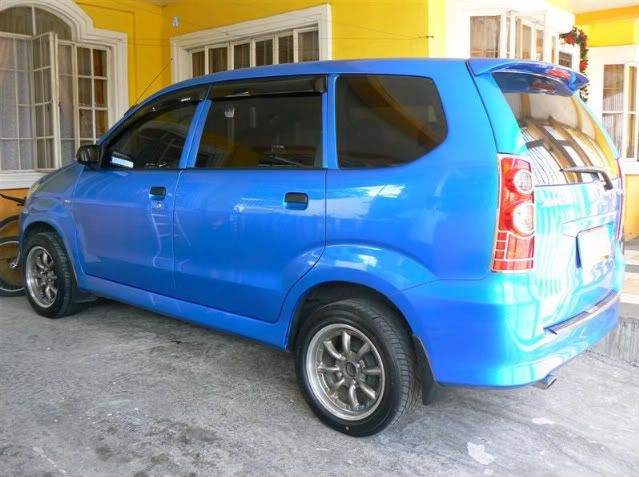Results 21 to 30 of 31
-
February 16th, 2010 12:17 AM #21
-
February 16th, 2010 12:19 AM #22
-
February 16th, 2010 12:31 AM #23
-
February 16th, 2010 11:03 AM #24
You should have weighed them to get a definitive comparison. Even with lightweight wheels, I've noticed that the tire weight can make the overall wheel+tire combo weigh much more than stock.
I weighed my stock spare (175/65R14 Michelin Vivacy + 14x5.5JJ stock Jazz wheel) vs. my current rolling stock (205/45R16 Bridgestone S-02 Pole Position + 16x7J Rota Circuit 10) with a bathroom weighing scale. The larger wheel+tire combo is 6 lb. heavier per corner, even though the Rota wheel itself is quite light at 17 lb. each. Lesson here is if you have lightweight wheels, don't ignore the tires' weights too!
The bad thing about heavier wheels and tires is that they are part of unsprung weight, and can produce more strain to the suspension and engine. You definitely want to keep unsprung weight to a minimum. Heavier tires and wheels affect the reactions of the springs and dampers and can contribute to a poorer ride as they have to spend more of their effort to control the wheel travel vs. controlling the vehicle's body movements.Last edited by Type 100; February 16th, 2010 at 11:05 AM.
-
February 16th, 2010 11:08 AM #25
Okay so far here's what we know that will influence ride comfort.
- tire pressure
- tire sidewall construction
- wheel + tire weight
- tire sidewall thickness/aspect ratio
- air vs. nitrogen as tire fill...but only to a certain extent
- spring rate: generally speaking, higher spring rates = worse ride quality
- suspension bushings: harder bushings = worse ride quality
Anything I missed?
-
February 16th, 2010 11:34 AM #26
-
February 16th, 2010 12:50 PM #27
-
-
-
February 16th, 2010 03:02 PM #30
- tire pressure - too high - jittery, harsh on impact. too low - sometimes bouncy, way too low... crunch.

- tire sidewall construction - too stiff, jittery, harsh on impacts
- wheel + tire weight - heavier wheels than suspension can control = wheel bounce on rough roads.
- tire sidewall thickness/aspect ratio - low profile - jittery, harsh on impacts. high profile - bouncy, in general.
- air vs. nitrogen as tire fill...but only to a certain extent
- suspension bushings: harder bushings = worse ride quality
Add this:
- shock absorbers + springs: (because you can't talk about springs alone)
soft shocks / soft springs = car reacts more smoothly to road imperfections, but may bounce uncontrollably on wavy roads or upon hitting potholes or bumps. Car rolls like a boat in corners. Can cause car-sickness at speed. Examples: Starex GRX, Kia Sorento, Kia Carens, Nissan B14 Exalta. This is optimum for ride comfort at slow speeds.
soft shocks / hard springs = car feels more sure-footed, but can feel "loose" over bumpy roads. Wheels judder uncontrollably ("tagtag"). This tuning is typical of most Japanese compact cars like the older Corolla and the current FD Civic.
firm shocks / firm springs = car reacts more to bumps / potholes, feels more steady in corners, but not so if the road is imperfect. May cause discomfort. Can cause car sickness if the spring rates are poorly matched to the car's weight (there is an optimum spring rate for the weight of a car... too much and the car will bounce). This tuning is typical of sportscars like the Evo.
firm shocks / soft springs = car tends to roll in corners but doesn't feel out of control. Better body control over bumps than firm/firm combo. Car feels steady on wavy roads. May "thump" over potholes, but doesn't cause car-sickness. This is typical of "euro" cars like the Focus and older Mercedes sedans. This is optimum for ride comfort at high speeds.
Taken to the extreme in the new Corolla, which has moderate shock damping and very very soft springs.
Ang pagbalik ng comeback...






 Reply With Quote
Reply With Quote





Hybrids and EV